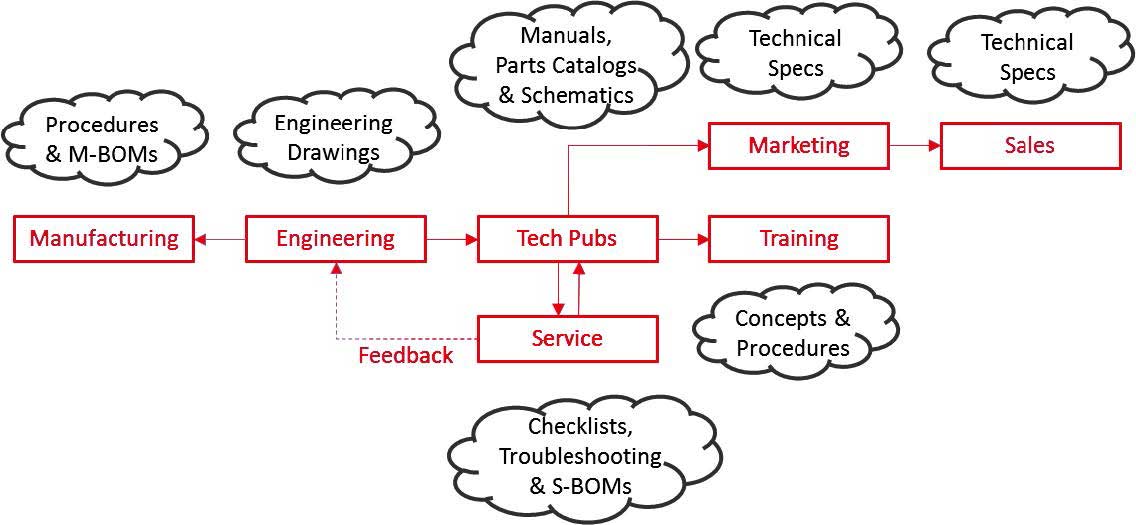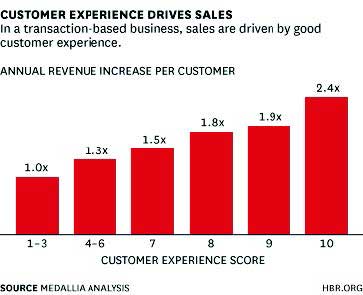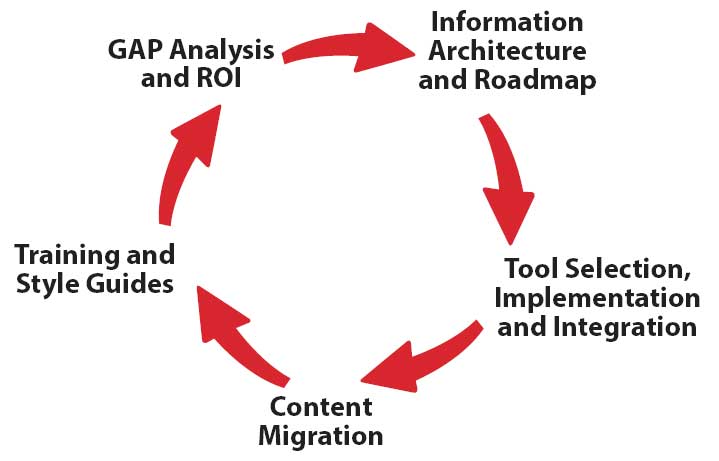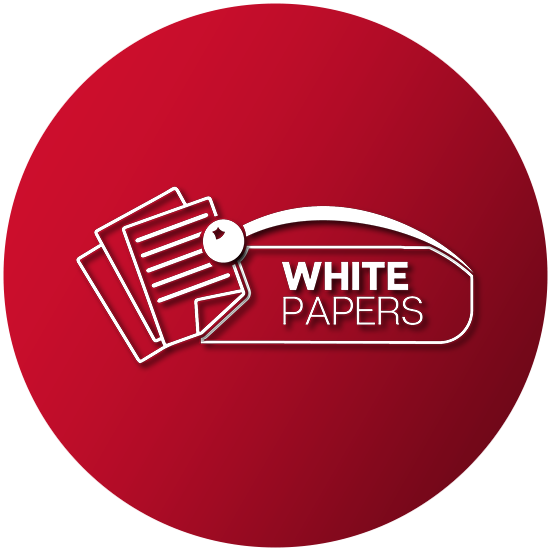Executive Summary
Technical Information is a key intellectual property that should be managed efficiently and effectively throughout the enterprise. Exploring technical information is becoming just as much a part of a customer’s pre-sales activity as it is post-sales. No longer limited to the “technical publications” function, the technical details of how products are selected, installed, operated and serviced are pervasive in Marketing, Training, and Service functions within the enterprise.
Organizations can realize significant improvements in time-to-market, development costs, support costs, and customer satisfaction by utilizing structured content and de-constructing information silos that lead to a single source of truth for technical information that is created once and used in multiple functions.
Introduction
Perspective is an interesting thing. A moon that seems so large rising above the horizon is just a small disk once high in the night sky. We all have our perspective or paradigm of the business world around us. In the technical organization this is perhaps best personified by the Technical Publications department.
To management, the Tech Pubs department has historically been viewed as a backwater cost center that was a necessary aspect of the business to fulfill delivery obligations informing customers how to install, operate, and/or maintain the equipment they purchased. As a cost center, investments are thoroughly scrutinized and kept to a bare minimum. Other departments hardly knew of their existence and operated in almost complete autonomy from the bunch of word geeks endlessly obsessed with manuals. Tech writers also took on a victim mentality where the demands were invariably too high, the funding always too low and the timelines impossibly tight. While Engineering is typically seen as the source of product knowledge, the connection between Engineering and Tech Pubs is rarely integrated or automated.
The stumbling block is in recognizing that information flows are worthy of being managed, and that managed information flows are a competitive distinction for you.
This White Paper is not about Technical Publications. It is about technical information and how it flows throughout the organization and the impact of technical information on customer behavior. We’ll discuss what we see as the invisible crossroads that many companies are at with regard to their growth and profitability – crossroads that they may not even be aware of.
We already have the technology and knowledge to manage and optimize technical information and its flows — your key intellectual properties — in order to: a) fuel increased revenue through improved customer satisfaction, and b) to decrease costs by finding operational efficiencies. The technology is no longer a bleeding edge and has a track record. The stumbling block is in recognizing that information flows are worthy of being managed, and that managed information flows are a competitive distinction for you. In this White Paper, we’ll show why and how.
To gain perspective of where you’re going it’s important to understand where you started. And for technical information – the one constant has been the source: Engineering. Whether drawings, documents or memos, the key intellectual property of the organization typically starts in Engineering.
While technical manuals were derivatives of the engineering drawings they were based on, they were usually created based on the understanding of the technical writer without much interaction with Engineering.
A New Era
In the pre-word processing era, manuals were created with typewriters and graphics were pasted to the page, resulting in a very time-consuming process. Other departments such as Training, Marketing and Service had similar challenges; primarily interpreting Engineering materials and repurposing them to meet their departmental goals.
This process also created a major challenge when it was time to update and deliver revised information.
The advent of word processors ushered in a slightly better environment in that content could be manually moved through a ‘copy and paste’ process that eliminated re-typing information.
This paradigm resulted in each department having their own content silo that was disconnected from the source (Engineering) information and related departments using the same source information. The result was a dysfunctional organization with mostly accurate information that operated with built-in inefficiencies.
The military, aerospace, and publishing markets had a compelling need to improve the efficiency of how they created, managed, and delivered large amounts of information. “SGML” (a very complex mark-up language) was the initial mainstream solution designed to enable the sharing of machine-readable large-project documents. SGML accomplished this but never achieved widespread adoption because it was very complex and very expensive to implement and maintain. SGML laid the foundation for its successors – XML and HTML.
As the business world migrated to personal computers and the internet brought a new and faster way to access information, it became clear that the way technical information was curated had to change. The response was Adobe’s PDF™ file format which presented content in a manner independent of application software, hardware, and operating systems. Today, it is showing its age and has limitations that are solved by other technologies.
This means that technical information is now part of the marketing portfolio as prospects engage in pre-sales due diligence.
The Information Age of the last twenty years has put a significant strain on the technical information paradigm. In a 2017 survey conducted by Lightspeed, 53% of global respondents reported that they use technical product information to learn more about a product before they buy it. This means that technical information is now part of the marketing portfolio as prospects engage in pre-sales due diligence. Inclusion of the technical information is often required to ship the finished product. Training and Service require the most current information to correctly execute their missions. Products are becoming more complex and development cycles are typically compressed in an effort to shrink time to market. Organizations are pursuing global markets where customers expect to see content in their language.
This means that the technical information associated with a product or service is not only harder to create on time, but is pervasive throughout the organization. The old way of manually creating and managing technical information no longer works.
A Changing World
We think of the 1990s as an era of digitization, when processes and work products were developed using discrete, analog means. Marketing pieces (posters, flyers, position papers) were conceived by hand and developed at a printer. Technical Publications departments moved from typewriters to computers; Service and Training created documentation based on product specifications, notes, and materials developed elsewhere.
Today, organizations like Marketing, Service and Training might all develop their own materials online —but the files are not named, managed, or reside in mutually available repositories. This is revealed on company websites, where customers must guess at a corporate organization chart to find information they need. Once found, they have no way of knowing if any piece of information is the most relevant or if they’ve found everything they need. Buyers find company websites to be as important as search engines when looking for trustworthy product information.
Forward-thinking companies recognize the waste of having multiple repositories, unstructured content, and unassociated workflows to develop and maintain disparate information products. They also understand that customer satisfaction with their products, website, and service is under constant strain to improve.
Addressing these problems is no longer bleeding-edge technology. Standards-based automation and management models exist and are used so that computers can do what they do best: automate and streamline tasks to facilitate and simplify the management of one of the most important assets to any organization: the information it creates.
Technical Information is the Blood
If Engineering is the ‘brain’ of the organization that offers a ‘technical’ product or service, the technical information associated with that product or service is the blood. Whether it be used in Marketing, Sales, Service, Training or ‘Tech Pubs’ – technical information is critical intellectual property that is worthy of being both nurtured and managed.
The flow of technical information through the organization is illustrated in the following diagram:

Notice that everything on the right side of “Engineering” is a customer facing function that drives the customer experience.
Relating Technical Information to Customer Service
Good technical product content significantly impacts customer satisfaction and customers’ willingness to purchase other products from the same brand. In the same Lightspeed survey, 76% of U.S. respondents said product information is essential to good customer service, and a similar 73% indicated that quality product information makes it more likely that they will recommend the brand to others.
And it’s the Customer Experience that Matters
In August 2014, Harvard Business Review (HBR)1 wanted to explore ways of quantifying the impact of good versus poor customer experiences — and then see what the value was in delivering them. What they found: not only it is possible to quantify the impact of customer experience — but the effects are huge.
What they found: after controlling for other factors that drive repeat purchases in the transaction-based business (for example, how often the customer needs the type of goods and services that the company sells), those who had good customer experiences spent 140% more compared to those who had poor experience.

The Costs of Good Customer Experience
The same HBR report addresses this topic:
Of course, the rationale we often hear for not investing to deliver a great experience is that the cost is high. Speaking to executives inside these businesses, however, we often hear the opposite. That is: delivering great experiences actually reduces the cost to serve customers from what it was previously. Unhappy customers are expensive — being, for example, more likely to return products or more likely to require support. Systematically solve the source of dissatisfaction, you don’t just make them more likely to return — you reduce the amount they cost you to serve. For example, Sprint has gone on record as suggesting that as part of their focus on improving the customer experience, they’ve managed to reduce their customer care costs by as much as 33%.
It’s time to stop the philosophical debate about whether investing in the experience of your customers is the right business decision. This isn’t a question of beliefs — it’s a question about the behavior of your customers. Connect the right data, and not only is it possible to quantify the impact of the difference between delivering a great experience and delivering a poor one — but it will demonstrate to everyone in your organization just how big that impact can be.
1https://hbr.org/2014/08/the-value-of-customer-experience-quantified
Mandates From the Top
In talking with managers that drive customer experience, we hear a common refrain: Managers are so busy keeping up with the day-to-day that they don’t have time to be strategic.
McKinsey & Co.2 looked at the consumer decision journey and found that in many companies, different parts of the organization undertake specific customer-facing activities—including informational web sites, PR, and loyalty programs. Funding is opaque. A number of executives are responsible for each element, and they don’t coordinate their work or even communicate. These activities must be integrated and given appropriate leadership.
Managers are so busy keeping up with the day-to-day that they don’t have time to be strategic.
Checklist for Success
Tactics that result in profound increases in customer satisfaction and/or cost decreases:
- Implement a “single source of truth” for technical information
- Content silos are tied to inefficient operations and inaccurate information. By having content sourced from a single repository, internal users will always pull from the most current source.
- Reuse appropriate content across the enterprise
- Content reuse is delivering the same information in multiple instances – regardless of the ‘how’ (paper, PDF, mobile, etc.). Reuse allows for a consistent message using the latest content. Reuse allows Marketing, Training, Tech Pubs and Service to use the same core information (packaged differently and with different peripherals) in an automated manner.
- Optimize translation processes
- If you’re trying to become a more global enterprise, language translation is a critical part of the process. If you’re already translating content, reducing the cost of those efforts is likely an ongoing effort. Modular content (think of your content as LEGO™ blocks that can be used to build different deliverables) allows not only reuse – it significantly lowers translation costs because only the content ‘blocks’ that have changed are translated. And the process can be automated with minimal human intervention.
- Develop self-service customer service portals with mobile support
- How customers want to be served, and how they want to engage with companies, has changed considerably in the past decade. The problem is that most service strategies haven’t followed suit, and this is hurting companies not just once but twice, through increased operating costs and decreased customer loyalty.
- Embrace customer and field feedback
- Customer service organizations use feedback about their products, services, and organizational processes so they can improve the quality of service they deliver. However, companies either inconsistently measure or fail to measure the success of their customers’ cross-channel journeys, as different functional organizations often manage channel s independently. Without these measurements, they cannot effectively support a customer throughout his or her customer service journey.3
2https://www.mckinsey.com/business-functions/marketing-and-sales/our-insights/the-consumer-decision-journey
3Forrester Research “Trends 2016: The Future of Customer Service” January 2016
From Concept to Action
In working with technical information for over 45 years across a variety of industries, we’ve developed a proven process to successfully implement these types of changes. We often see organizations turn to new technology (tools) as the silver bullet without doing their homework first. Our approach is different – based on understanding and quantifying business requirements, developing and implementing the architecture that addresses business needs, and verifying that requirements were met. It takes strong leadership and engaged management to drive the mandate through the enterprise, so we work with executives, directors and managers to align a common vision and specific objectives. Being tool provider-agnostic (there are many choices) allows us to implement the technology, processes and skills that address business requirements and constraints and keeps our priorities aligned with your priorities.

What About the WOW Stuff?
We see a lot of buzz around futuristic technologies like the Internet of Things (IoT), Augmented/Virtual Reality and ChatBots. While these newer technologies are impressive and likely a part of the future of technical information, they are still – for the most part – on the ‘bleeding edge’ in 2018.
Our approach is to develop your information architecture so that the framework for these technologies is in-place if and when the value proposition is aligned with (future) business needs. Structured content is the foundation of all of these futuristic technologies. By ‘designing in’ but not ‘building out’ you are better prepared for next generation solutions without risking near-term profits.
Structured content is the foundation of all of these futuristic technologies.
Next Steps
JANA has been committed to technical information for over 45 years – it’s our only business. We have implemented dozens of technical information environments and trained hundreds of technical writers on their operation. We understand the critical links between Engineering, Tech Pubs, Training, Marketing and Service.
JANA will take the time to understand your situation and objectives and work with you and your team to build and implement a plan that improves customer satisfaction and time to market (increasing bottom-line revenue) while improving operational efficiency (decreasing bottom-line expenses).
If you value a partner that not only talks the talk but walks the walk, JANA is the right answer.
Download JANA White Paper PDF





